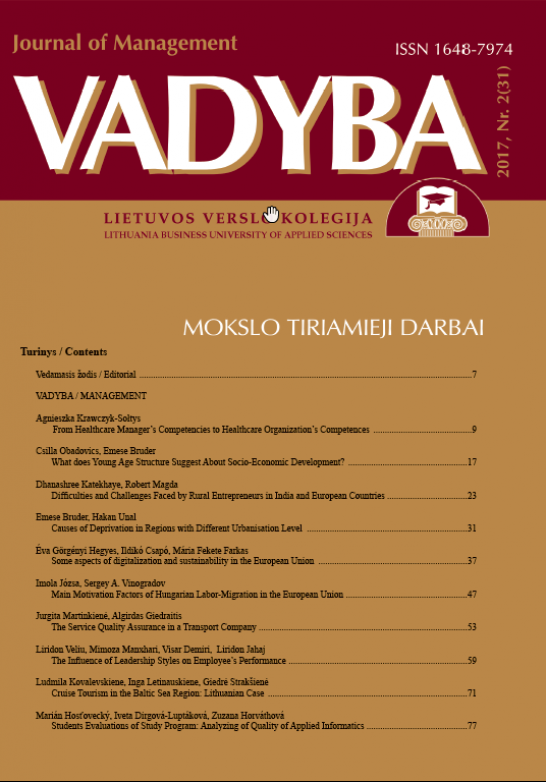FEATURES OF THE FORTH INDUSTRIAL REVOLUTION:
TAXES CASE
FEATURES OF THE FORTH INDUSTRIAL REVOLUTION:
TAXES CASE
Author(s): Valentas Gružauskas, Gita StatnickėSubject(s): Business Economy / Management, Fiscal Politics / Budgeting
Published by: Lietuvos verslo kolegija
Keywords: technological change; artificial intelligence; unemployment; tax-payment system; entrepreneurship;
Summary/Abstract: The upcoming fourth industrial revolutions causes instability in the society and economy. From one side, the development of robots and artificial intelligence allows automation of business processes, which in result stimulates the growth of the economy. In 2016 an insurance company implemented artificial intelligence for insurance pay-out calculations, which increased the productivity of the company by 30%. From another side, automation increases structural unemployment rate, which causes negative consequences to society. A global market research company McKensey stated that today's technology could feasibly replace 45% of jobs right now. Technological development is inevitable due to rapidly growing population and changing business environment. Without technological development, the productivity could not increase and economic prosperity would be impossible. Moreover, due to required high capital investments multi-national companies can monopolize the industry, leaving small and medium enterprises (SMEs) behind. This problem could be an even bigger concern for the European Union, because today SMEs are the backbone of Europe's economy, which represent 99% of all businesses in the EU. Increased productivity can be achieved by large investments, therefore SMEs losses competitiveness advantage, which causes natural monopolistics to rise. For example, a robotics company “Symbotic” has developed a system to automate warehouse jobs formerly done by humans. The system cut labour costs by 80% and reduced warehouse size by 25%, however the initial investment required more than 74 EUR million. These kind of systems are still expensive, however in future the costs will decrease. These findings indicate the necessity for the government to interfere and to present a tax-subsidy scheme, which would stimulate economic growth and would limit the negative consequences of business process automation. The extra funding should be oriented to the reformation of the current education system and to aid employees during the requalification period.
Journal: VADYBA
- Issue Year: 31/2017
- Issue No: 2
- Page Range: 127-132
- Page Count: 6
- Language: English

